Should a kitchen floor match worktops? Kitchen experts explain the pros and cons of a matchy-matchy look
Whether you want to match or mix it up, these examples will help you make the right choice
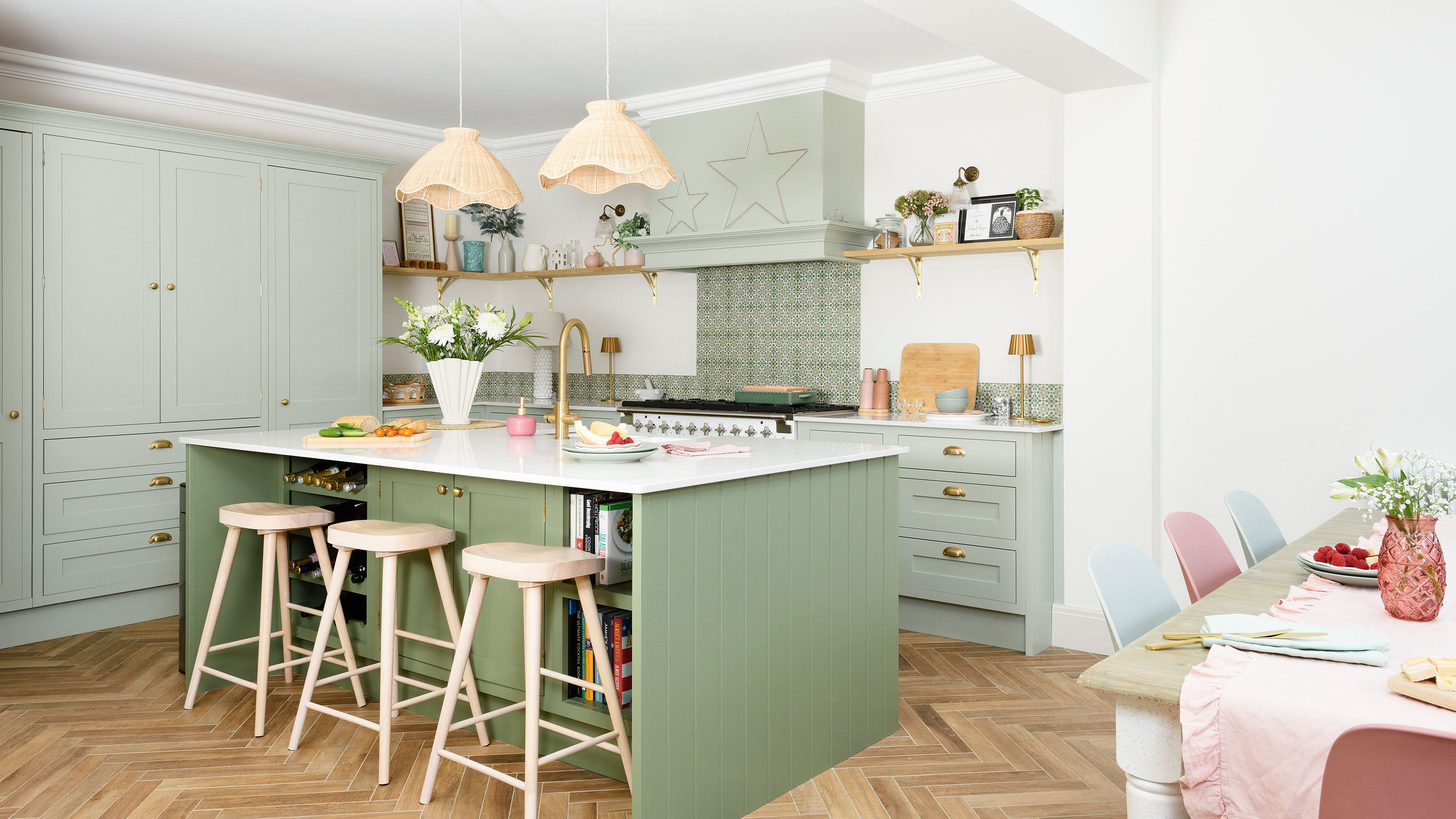

When you’re planning a kitchen, it’s easy – and understandable – that you’d think about the style of units first right? They’re the main feature after all. However, thinking about your kitchen flooring ideas and the worktops in tandem with the kitchen itself is a great idea. Both usually take up the majority of the surface area within a space, so carefully consider your choices, how they go together and how each looks against your cabinetry.
Whether a kitchen floor should match worktops is up for debate. Going for a matchy-matchy approach is of course an option and one that designers agree can work well in the right setting. But many of the experts we spoke to recommend choosing different but complementary designs to give more dimension to a room scheme, make it look more modern and to add a bit more personality.
‘Worktops and flooring set the tone for the rest of the kitchen design, influencing everything from cabinetry choices to wall colours and accessories. Their interplay significantly affects the overall aesthetic,’ says Shehryar Khan, managing director at Sheraton Interiors.
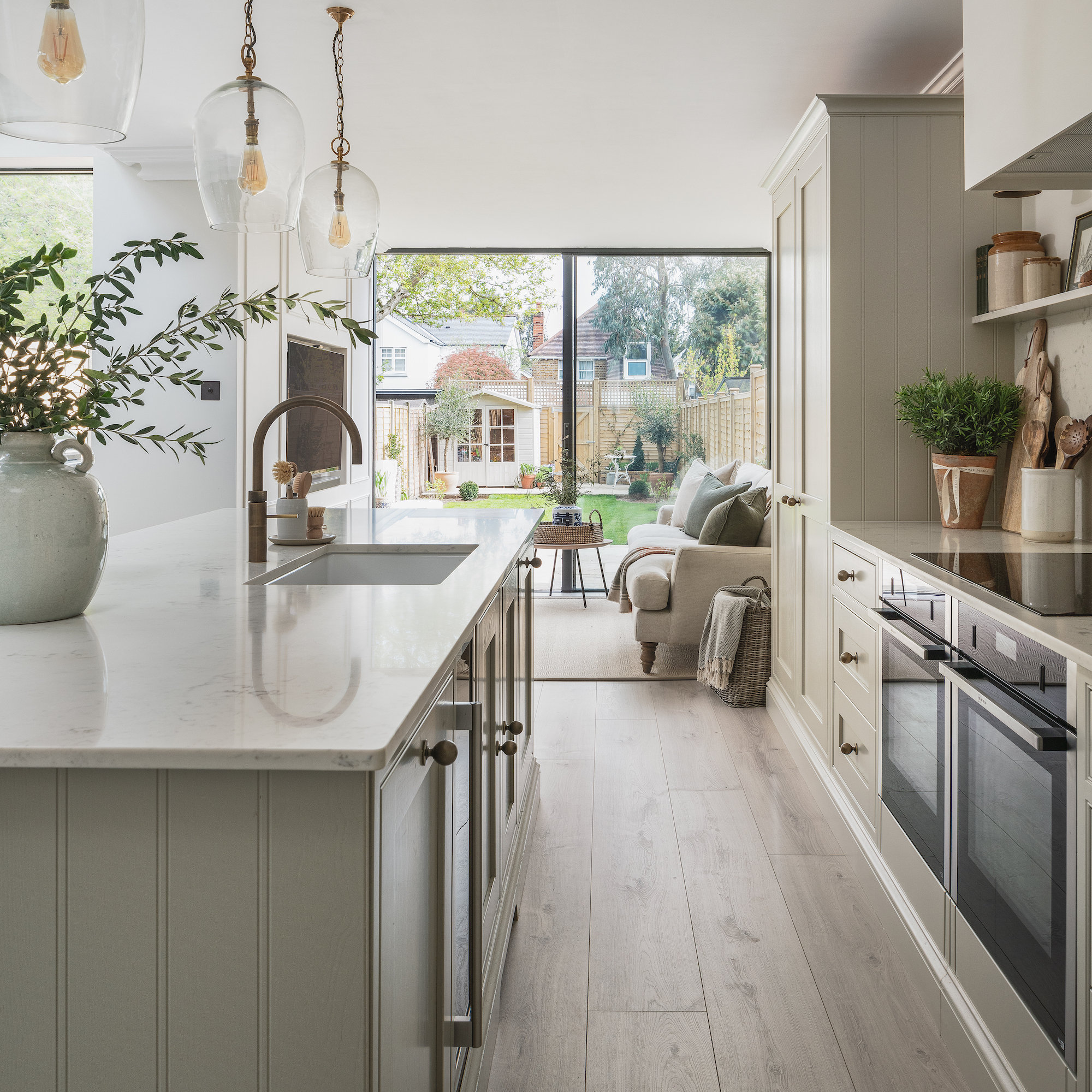
Other designers agree and point out that choosing the floor first can be a good starting point because it often needs to work with more than just the worktops, and can even run through into other spaces.
‘I spend more time talking about surfaces with my clients than any other single part of a kitchen project,’ says Graham Robinson head of design at Halcyon Interiors. ‘There is so much to select from and within this a nearly infinite number of colours and finishes. Think about practicality first: how will the surfaces will wear, how will your floor feel with or without shoes and even at different times of the year? Take advice and ask lots of questions. These parts of the design are a massive decision that aren’t easy to go back on.’
With that in mind, we look at the different options for worktop and flooring combinations to help you narrow down what could work best in your space. Which will you go for?
1. When matching floor and worktop works well
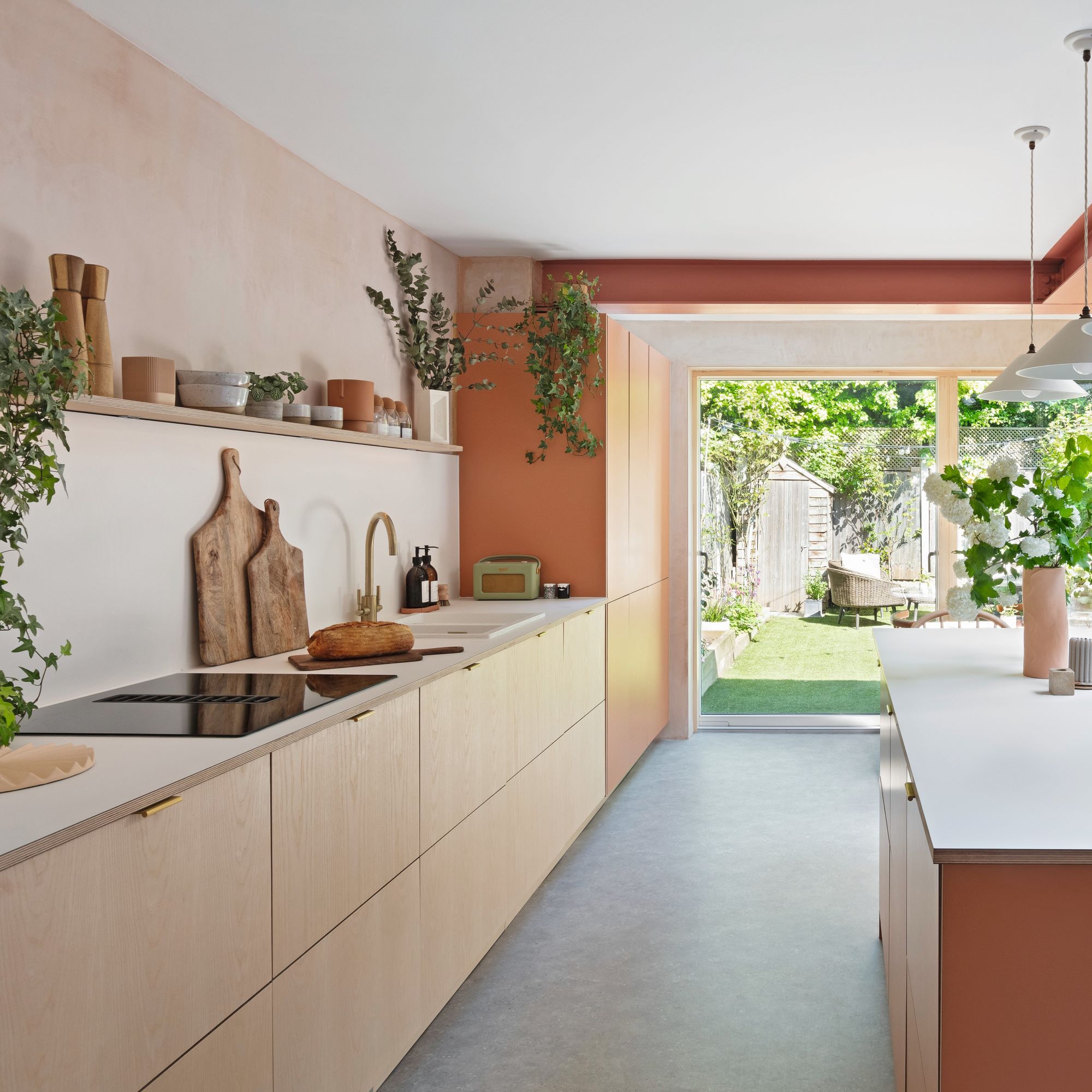
Matching the kitchen floor with the worktops can create a flow within the space, particularly in small kitchens where a unified palette can make the room feel larger and more streamlined. It creates a blank canvas for interest in other things in a room, such as art or a feature wallpaper.
Sign up to our newsletter for style inspiration, real homes, project and garden advice and shopping know-how
‘A matching approach also works well in minimalist designs or when aiming for a monochromatic aesthetic, where subtle differences in texture rather than colour create the visual interest. It works well in modern or contemporary kitchens that aim to highlight clean lines,’ says Shehryar.
A word of caution though. When large surface areas blend too much, the resulting look can be rather bland and uninspired so sometimes you need to break it up with varying materials. ‘It’s important to strike a balance – too much matching can lead to a sterile environment lacking in personality,’ says Shehryar.
2.Match the worktops to your units
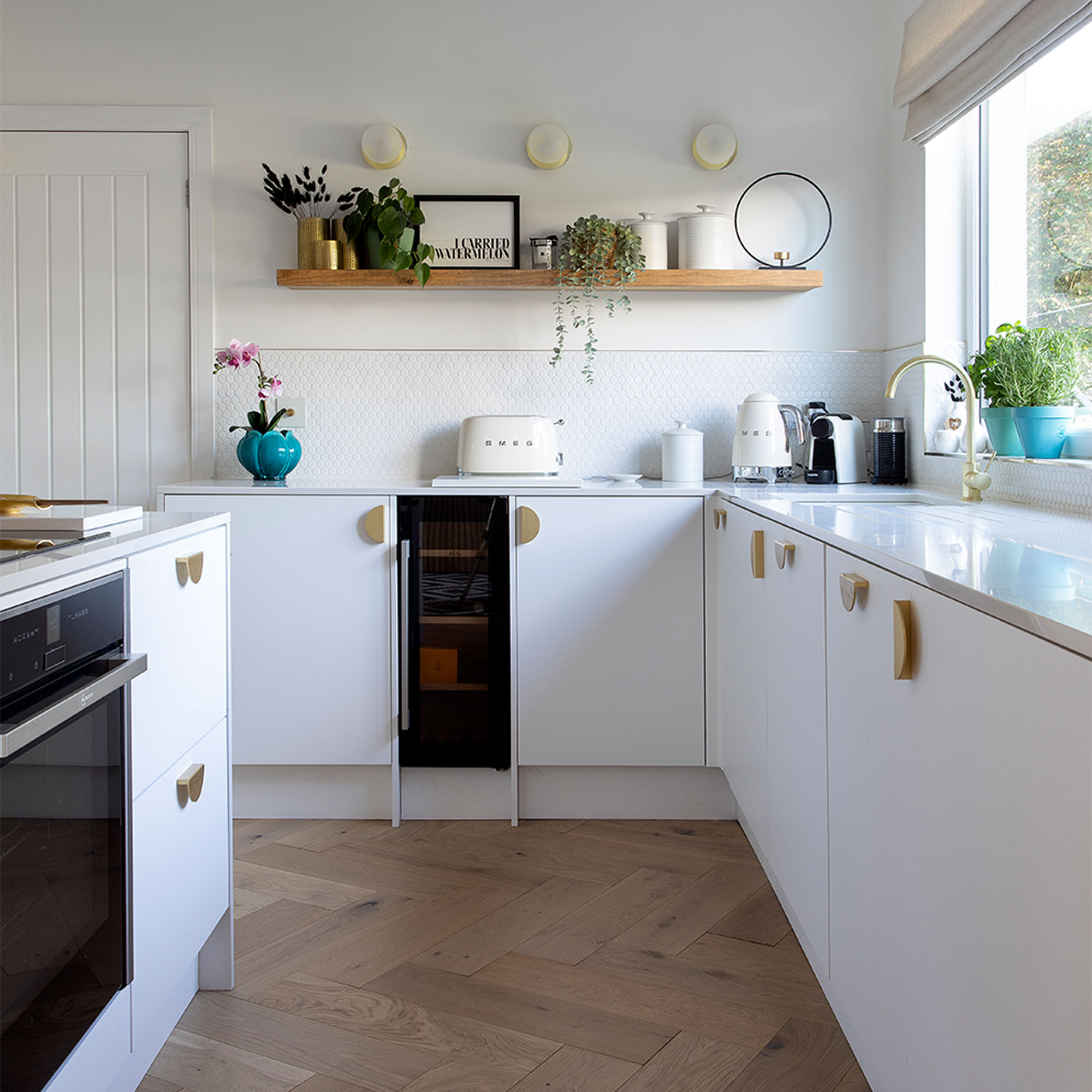
‘I prefer to match the worktops to the kitchen units for a harmonious look, and create contrast between the flooring and worktops,’ says Graham.
This works particularly well when you go for a super contemporary kitchen style such as a handleless or slab door design with a laminate or veneer finish. The front of the door can be matched to a slim worktop in the same shade to create a sleek look.
Some kitchen units are now available with stone-effect finishes like marble, so you could even have a veined marble look on your units with a matching marble worktop. Or how about a stainless steel worktop on stainless steel units for an industrial vibe?
3. Go tonal
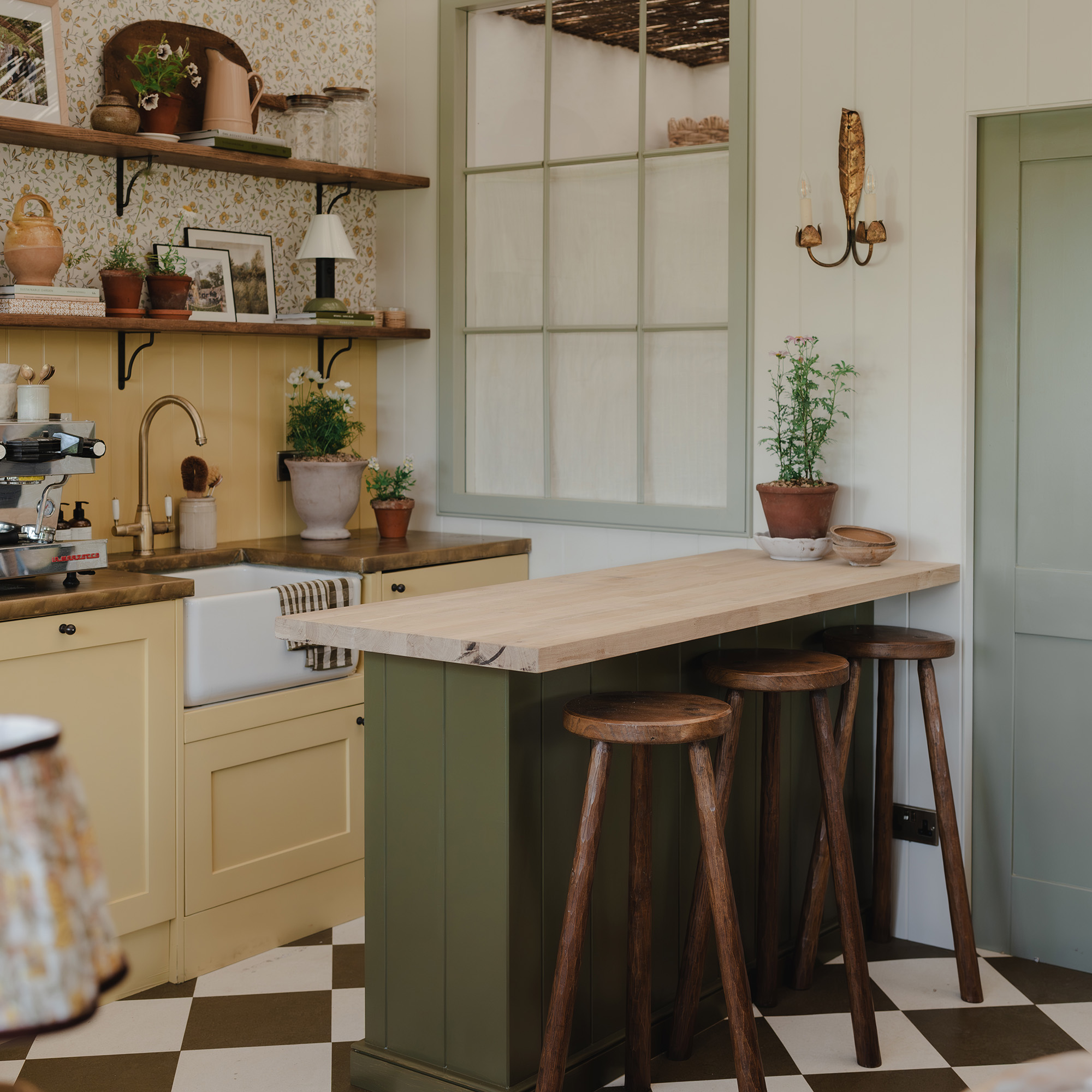
Choosing different but complementary materials for the worktop and flooring is very much on trend. To ensure that different flooring and worktop materials work well together, focus on colours, tones, and textures that pair well.
‘By mixing materials, you can highlight different elements of your kitchen design, making the space feel more dynamic and layered. It's a way to express individuality while still maintaining a cohesive overall look,’ explains Sinead Trainor, kitchen category manager at LochAnna Kitchens.
Focus on finding common ground between the worktop and floor options to make sure they will work together. So go for similar undertones, colours that complement each other and textures that will sit nicely alongside each other. Make sure to get plenty of samples to see how the different materials look next to each other and within your space at different times of day.
‘Sometimes choice of materials comes from a practical standpoint so they might be different in texture but similar in look. This creates a timeless feel as not one item is drawing all of the attention,’ says Graham. ‘I designed a kitchen with concrete-effect units and lighter concrete floor with texture and smooth toned grey worktops. The different tones all complemented each other beautifully.’
If you’ve got your heart set on a particular material, how about playing around with the texture? ‘One combination that’s really popular is to mix polished worktops with a shine with matt flooring, or vice versa,’ says Memuna Ismail, senior designer and kitchen showroom manager at Blackburn Tile Centre.
4. Mix wood and stone
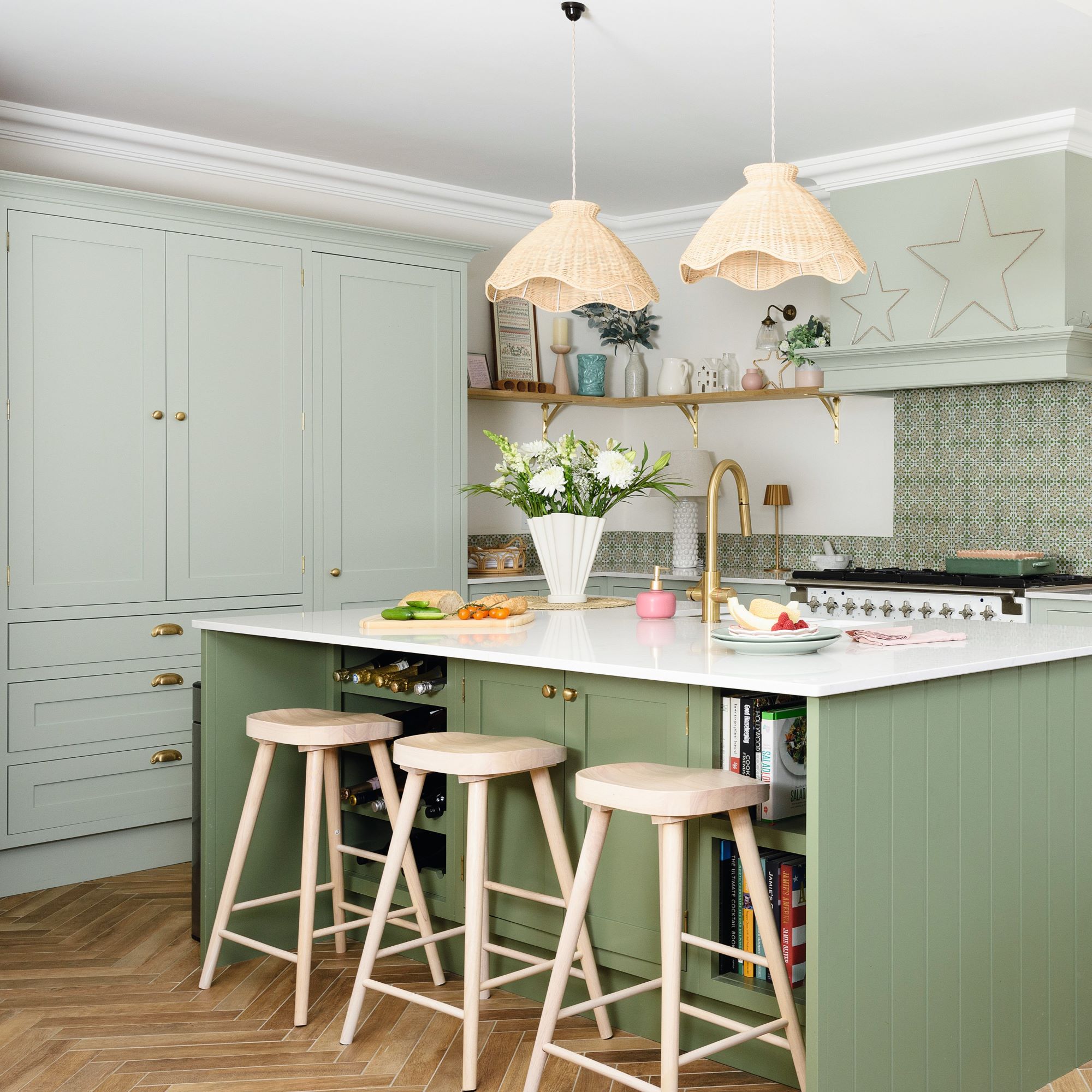
A classic combination, wood with stone such as granite, marble, porcelain or composites like quartz creates a balance between materials. ‘The wood softens the harder feel of a stone,’ says Graham.
When pairing wooden worktops, neutral tiles, stone, or lighter wood tones for the flooring can complement the natural warmth of the wood. The opposite applies if you go for wooden floors – so combine a wood floor with a stone worktop.
‘Currently, we're seeing a strong trend towards combinations like marble worktops with wood flooring, which offers a beautiful contrast of natural materials,’ says Sinead. ‘And if you’re working within a budget, modern laminate worktops offer the look and feel of real stone for a fraction of the price.’
Not a fan of marble? ‘Soft concrete-effect flooring complements wooden worktops well, as would a polished stone,’ says Memuna.
5. Combine stone worktops with tiles
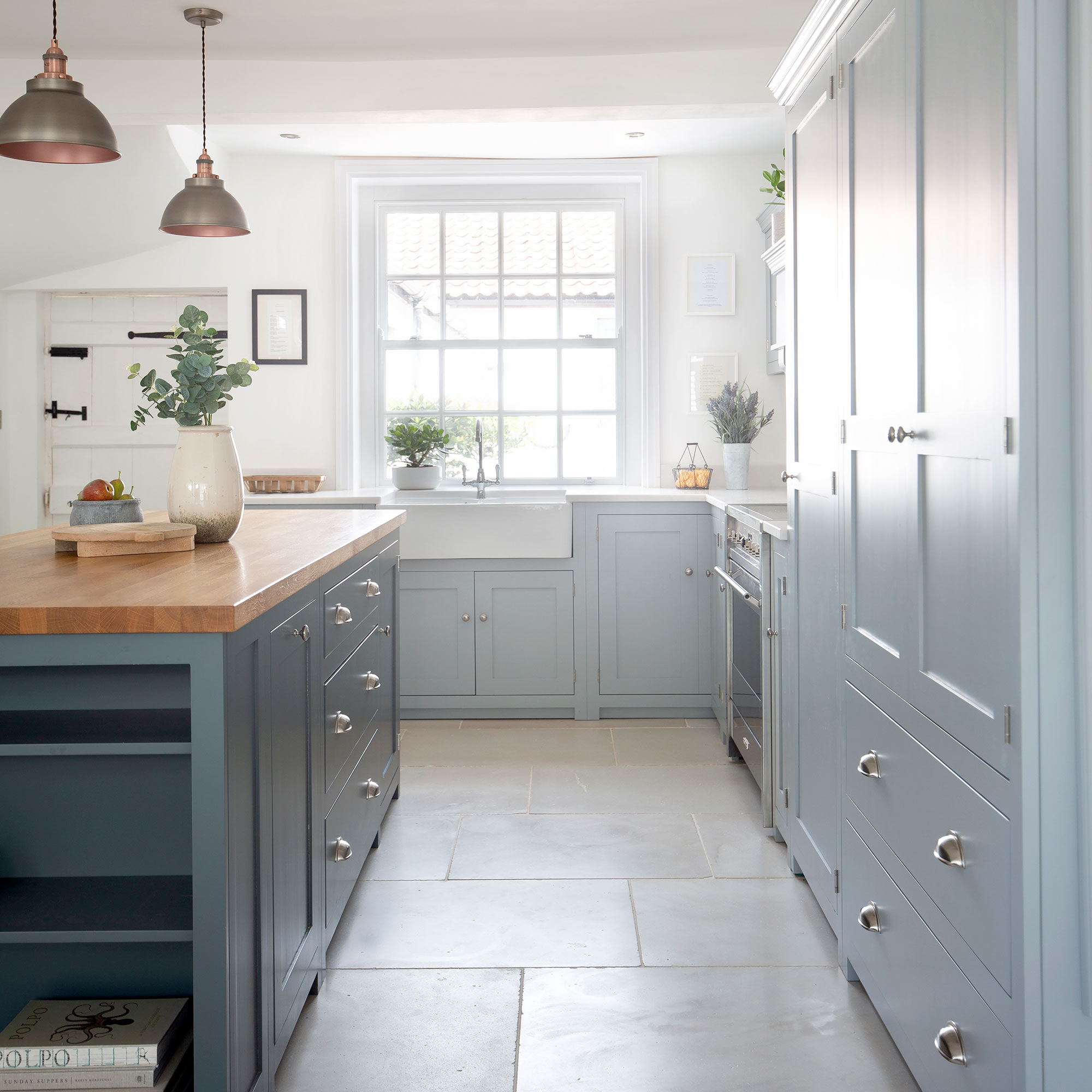
Another popular choice is quartz worktops combined with large-format floor tiles, which create a sleek and modern aesthetic.
‘Mixing natural stone worktops with patterned or textured tiles is gaining popularity, allowing homeowners to add a touch of personality and flair to their kitchen design,’ says Sinead.
Where your stone worktop choice has heavy veining, opt for a floor tile that picks up one of the colours within the worktop so the two styles sit nicely together but the floor tile is more subtle. This way, the surfaces won’t be competing for your attention.
6. Create one statement
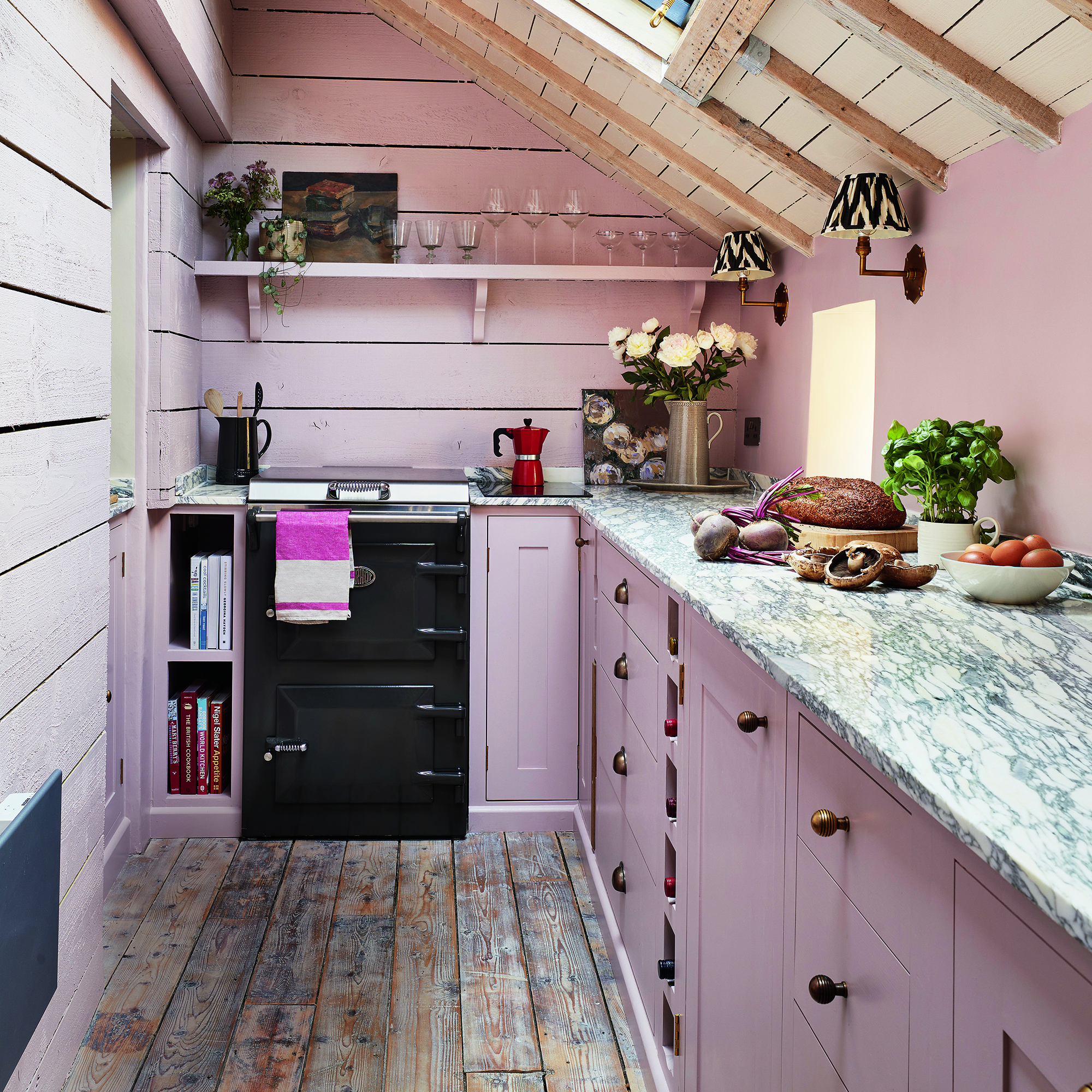
Speaking of avoiding competition between different finishes, it’s a good idea to pick one area to make a statement and let that do the talking. A dramatic worktop needs a plain floor to keep the peace. While if your flooring is bold, keep the worktop simple.
‘One major pitfall to avoid is clashing patterns or colours, as this can create a disjointed and overwhelming look,’ advises Sinead. ‘For marble or marble-look worktops, simple and understated flooring, such as wood or solid-coloured tiles, can help the elegance of the marble stand out. If you have a statement worktop with heavy veining or bold colours, it's wise to go for neutral or subtle flooring to avoid visual competition. Similarly, if you choose a statement floor, a more pared-back worktop allows the floor to be the focal point, ensuring that the space doesn’t feel too busy or overwhelming.’
7. Avoid too many different styles

The secret to a good marriage between your worktop and floor choice is steering clear of introducing too many different materials. You could have two worktop materials in your kitchen, for example, one on a breakfast bar or island, and another for the rest of the space, and then the floor, taking the total number of materials to three. Any more than that may start to look disjointed.
‘Another major pitfall is clashing styles or colours that compete rather than complement. For instance, pairing a highly textured floor with a heavily patterned worktop can make the space feel chaotic,’ says Shehryar.
All in all, balance is key. The whole kitchen needs to flow in harmony.
FAQs
Should the kitchen floor be lighter or darker than worktops?
There isn’t a right or wrong answer to this question. Rather, it’s about thinking about which part of your kitchen you want to emphasise and the effect you want to create. ‘Both lighter and darker floors can work beautifully,’ says Sinead Trainor, kitchen category manager at LochAnna Kitchens.
‘A lighter floor can make a kitchen feel more open and spacious, reflecting more light, while a darker floor can add warmth and depth.’ Remember it’s all about balance, so if you choose a dark-coloured floor, consider a lighter shade for the worktop and vice versa. When going for a tonal approach, the key is keeping to the same undertones, so the floor could be lighter or darker than the worktops but be in keeping with the palette.
What kitchen flooring goes with wood worktops?
With trends like Scandi, Japandi, Cottagecore and farmhouse aesthetics so popular, it’s no surprise that wooden worktops and wood-effect worktops are a go-to choice for many. But what flooring works best with wooden worktops? Since wood has lovely warm qualities to it, you can pair it with stone, concrete, porcelain tiles that are plain or patterned and vinyl. Think about the look you want to create. Wood with concrete, for example, will create a utilitarian style, while wooden worktops with stone flooring such as limestone will create a more classic look.
You could use patterned vinyl or porcelain tiles on the floor to act as the focal point combined with simple wooden worktops without too much visible grain. If you have wooden flooring with wooden worktops, ensure you choose varieties with a similar undertone. A good way of matching wood with wood is to introduce a pattern on the floor through how the planks are laid, such as in a parquet or herringbone formation to add interest.

Lindsay Blair is an editor, writer & content consultant with a focus on home design, interiors & lifestyle. Previously editor KBB Magazine and thesethreerooms.com, she has also contributed to The Times, Ideal Home, Build It & more.